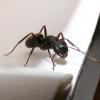- Formiculture.com
- Forums
- Gallery
- Members
- Member Map
- Chat

Casually looking for leafcutter queens (Houston TX)
Started By
CampoKing
, Dec 21 2020 10:30 AM
leafcutter atta houston
9 replies to this topic
#1
 Offline
-
Posted December 21 2020 - 10:30 AM
Offline
-
Posted December 21 2020 - 10:30 AM
I may be looking at the wrong time of year, but I'm curious if a small Atta colony (or group of founding Queens) is available in the Houston area. I've been very patiently studying the needs of the genus & I feel I'm ready to make a serious long-term attempt to keep a colony of leafcutters.
I don't know what a reasonable price will be, so I'm happy to discuss the details with any members who are offering or previously offered these ants. Cheers.
I don't know what a reasonable price will be, so I'm happy to discuss the details with any members who are offering or previously offered these ants. Cheers.
- TennesseeAnts and TechAnt like this
#2
 Offline
-
Posted December 21 2020 - 1:05 PM
Offline
-
Posted December 21 2020 - 1:05 PM
I believe all colonies are out of founding and are in a small/medium size colony stage. So if you manage to find a Atta seller, it’d likely not be founding queens. Best of luck on finding Atta.
- Ants_Dakota likes this
My Ants:
(x1) Campontous semitstaceus ~20 workers, 1 Queen
(x1) Camponotus vicinus ~10 workers, 1 Queen (all black variety)
(x1) Tetramorium immigrans ~100 workers, 1 Queen
(x1) Myrmercocystus mexicanus -1 Queen
(x2) Mymercocystus mimcus -1 Queen
(x1) Mymercocystus testaceus ~45 workers, 1 Queen
(x1) Campontous semitstaceus ~20 workers, 1 Queen
(x1) Camponotus vicinus ~10 workers, 1 Queen (all black variety)
(x1) Tetramorium immigrans ~100 workers, 1 Queen
(x1) Myrmercocystus mexicanus -1 Queen
(x2) Mymercocystus mimcus -1 Queen
(x1) Mymercocystus testaceus ~45 workers, 1 Queen
#3
 Offline
-
Posted December 21 2020 - 1:36 PM
Offline
-
Posted December 21 2020 - 1:36 PM
Soon. Atta texana are some of the earliest fliers, starting as early as February. Nobody will have any queens now, but in just a few months people will start catching more.
- TennesseeAnts and Ants_Dakota like this
I like leafcutter ants. Watch The Ultimate Guide to Fungus Growing Ants:
https://youtu.be/VBH...4GkxujxMETFPt8U
This video took like over 100 hours of work, you should for sure watch it.
#4
 Offline
-
Posted December 21 2020 - 2:33 PM
Offline
-
Posted December 21 2020 - 2:33 PM
wow! February is very soon.
Ants I am keeping:
none for now, planning on being more active this year
#5
 Offline
-
Posted December 21 2020 - 2:42 PM
Offline
-
Posted December 21 2020 - 2:42 PM
Do Atta need more humidity? I’m curious why they haven’t spread more west towards the deserts of AZ, NV and CA???
#6
 Offline
-
Posted December 21 2020 - 2:55 PM
Offline
-
Posted December 21 2020 - 2:55 PM
Do Atta need more humidity? I’m curious why they haven’t spread more west towards the deserts of AZ, NV and CA???
They are found in AZ, but most of CA and all of NV are far too cold to have any native populations of Atta.
- SoySauce likes this
My Main Journal | My Neivamyrmex Journal | My Ant Adoption | My YouTube
Join the TennesseeAnts Discord Server! https://discord.gg/JbKwPgs
#7
 Offline
-
Posted December 21 2020 - 3:08 PM
Offline
-
Posted December 21 2020 - 3:08 PM
Atta mexicana is the only species of Atta that can stomach a drier climate, and even then the southwest US is largely too dry still. They only have two miniscule populations in Southern Arizona, and the more studied population at Organ Pipe Cactus National Monument is shrinking in size, and may be entirely extinct within the next few decades. The species as a whole is still fine in most of their range, but the US populations are struggling. Them spreading further in to the US is essentially impossible.
- SoySauce, TennesseeAnts, RushmoreAnts and 1 other like this
I like leafcutter ants. Watch The Ultimate Guide to Fungus Growing Ants:
https://youtu.be/VBH...4GkxujxMETFPt8U
This video took like over 100 hours of work, you should for sure watch it.
#8
 Offline
-
Posted December 21 2020 - 10:04 PM
Offline
-
Posted December 21 2020 - 10:04 PM
Do Atta need more humidity? I’m curious why they haven’t spread more west towards the deserts of AZ, NV and CA???
Atta texana needs a crap ton of humidity. I used to live in Texas and they would fly at the height of summer in Houston, one of the most humid places in the Universe. My guess is other Attas are similar or the same.
- SoySauce likes this
Instagram:
nurbsants
YouTube
California Ants for Sale
Unidentified Myrmecocystus
https://www.formicul...ls-near-desert/
Undescribed "Modoc"
https://www.formicul...mp-ca-5-4-2017/
Camponotus or Colobopsis yogi:
https://www.formicul...a-ca-1-28-2018/
Camponotus us-ca02
https://www.formicul...onotus-us-ca02/
Unidentified Formica
https://www.formicul...l-ca-6-27-2020/
Pencil Case and Test Tube Formicariums
https://www.formicul...m-and-outworld/
Bloodworm Soup
https://www.formicul...bloodworm-soup/
#9
 Offline
-
Posted December 22 2020 - 4:25 AM
Offline
-
Posted December 22 2020 - 4:25 AM
When I lived in Sugarland/Spring (Greater Houston Area) I found that the A.texana had their nuptial flights the first week of May after the first large rain, their flights were definitely underway at 8pm to later. I would generally, just knowing it was the first week of May and it had rained found that mating flights would occur that evening after the rain. The alate females are definitely attracted to lights: parking lots etc., so, be careful that if you collect from those locations they may NOT be mated.
Edited by PurdueEntomology, December 22 2020 - 4:27 AM.
- Fatatoille likes this
#10
 Offline
-
Posted December 22 2020 - 8:04 AM
Offline
-
Posted December 22 2020 - 8:04 AM
I think despite their humidity requirements (the hardest part, but not that hard), Atta seem to have far more success than Acromyrmex do. Maybe cause they are more popular to keep in places that can import them, but even among those who import Acromyrmex there isn't really any success with them. By success I mean 5+ years (think saw one that got to 7 years old and then they died for no apparent reason) or even 10+ years that I've seen people's Atta colonies get in age.
Edited by Vendayn, December 22 2020 - 8:05 AM.
- TennesseeAnts likes this
Also tagged with one or more of these keywords: leafcutter, atta, houston
 |
Market Place →
General Market Place →
Leaf cutter ant nests for saleStarted by shuwen2.0 , Mar 26 2025 |
|

|
|
 |
Market Place →
General Market Place →
WTB Neoponera villosa queen San Antonio tx will driveStarted by Artimusclydeperez , Nov 4 2024 |
|

|
|
Ants & Myrmecology →
General →
Explanation of the Evolution of Atta sp.Started by drawpositive , Sep 8 2024 |
|

|
||
Ants & Myrmecology →
General →
Backyard AntsStarted by AntidepressAnt , Jun 14 2024 |
|

|
||
Ant Keeping →
Ant Keeping Journals →
Atta texana attempt to form coloniesStarted by dessertjuju , May 18 2024 |
|

|
0 user(s) are reading this topic
0 members, 0 guests, 0 anonymous users






















